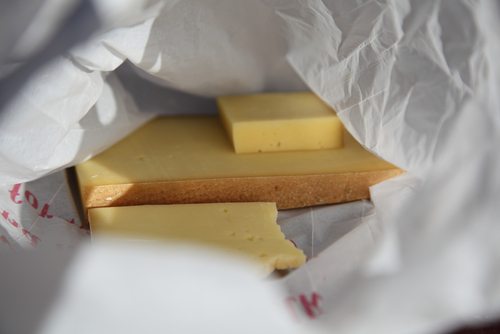IIT students identify new enzyme from Yak Cheese that can help vegetarians
PTI May 11, 2018
A new enzyme from yak cheese has been identified by students at IIT Roorkee that has the potential to improve the nutritional value of cereals and can particularly benefit vegetarians who often suffer from the deficiency of micronutrients such as phosphorous.

The newly identified enzyme "phyLf" could be used in enhancing the micronutrient availability to infants, pregnant women and the elderly, and experts were also studying if it could help in improving growth in poultry."In plants, phosphorous is stored mainly as organic phosphorous called phytate,' which is an anti-nutritional factor (ANF). Nuts, seeds, beans and whole grains are rich in phosphorous, while vegetables and fruits have lesser quantity."Despite this, people with vegetarian diets not only exhibit deficiency of phosphorous but also as other minerals. This is because humans lack an enzyme called phytase needed to convert phytate into free phosphorous for absorption by the body," said Naveen Kumar Navani, Associate Professor, Department of Biotechnology, IIT Roorkee, who led the research.
Elaborating on his research, he said that the Phytase enzyme was identified, cloned and characterised from a probiotic bacterium 'Lactobacillus fermentum NKN51'. The bacterium was isolated from ethnic cheese (called churpee) made from milk of Himalayan yak from Khardong village in Nubra valley, Leh.The IIT team is now collaborating with the Indian Council of Agricultural Research (ICAR) to apply this purified phytase enzyme along with other plant derived antimicrobials to see their efficacy on reducing the load of pathogenic bacteria and improving the growth performance of poultry.
"In the long term, this enzyme could be used in enhancing the micronutrient availability to infants, pregnant women and the elderly," Navani said.Micronutrients play a key role in metabolism and in the maintenance of tissue function.Conventionally, phytase enzymes are derived from fungi and are considered fit for use to improve nutritive values of poultry and other livestock feeds."We were looking for a source that could be used to improve food items consumed by humans - a food grade bacterium. We tried samples of milk and other dairy products of cow, buffalo, sheep and goat from different parts of the country," Navani added.
-
Exclusive Write-ups & Webinars by KOLs
-
Daily Quiz by specialty
-
Paid Market Research Surveys
-
Case discussions, News & Journals' summaries